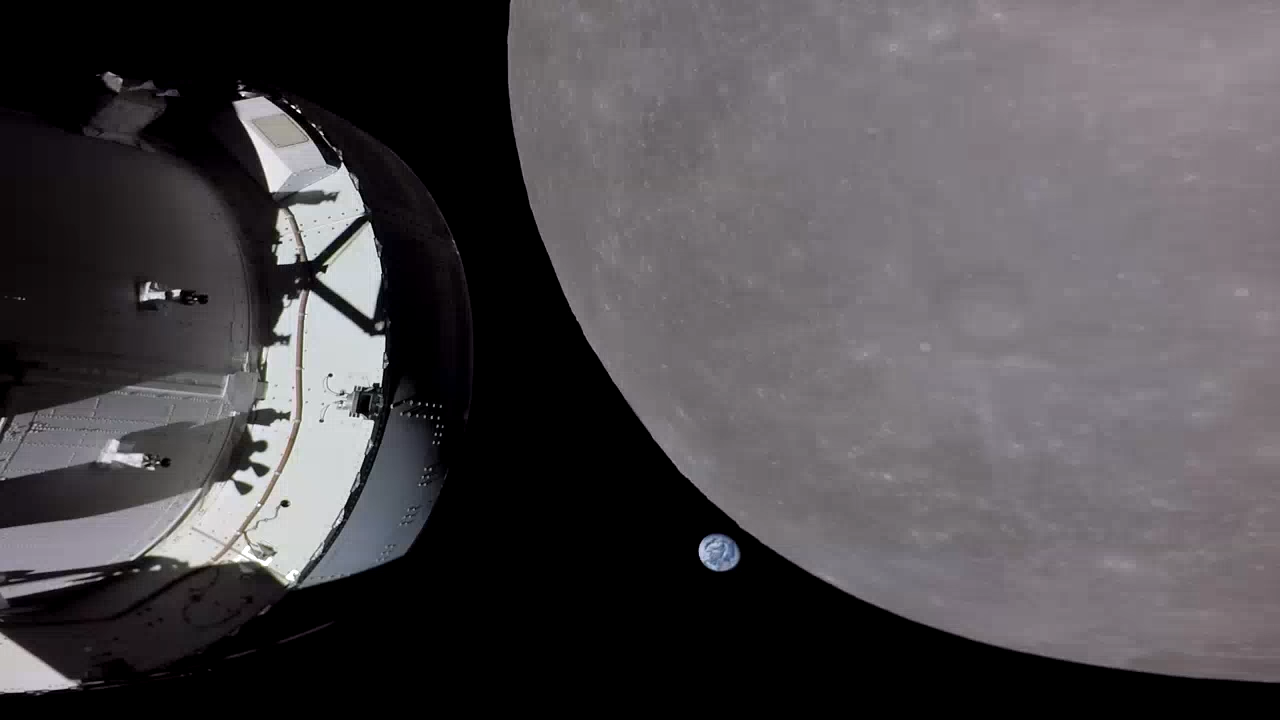2022年11月23日
Earthset from Orion
Image Credit: NASA, Artemis 1
Explanation: Eight billion people are about to disappear in this snapshot from space. Taken on November 21, the sixth day of the Artemis 1 mission, their home world is setting behind the Moon’s bright edge as viewed by an external camera on the outbound Orion spacecraft. The Orion was headed for a powered flyby that took it to within 130 kilometers of the lunar surface. Velocity gained in the flyby maneuver will be used to reach a distant retrograde orbit around the Moon. That orbit is considered distant because it’s another 92,000 kilometers beyond the Moon, and retrograde because the spacecraft will orbit in the opposite direction of the Moon’s orbit around planet Earth. Orion will enter its distant retrograde orbit on Friday, November 25. Swinging around the Moon, Orion will reach a maximum distance (just over 400,000 kilometers) from Earth on Monday November 28 exceeding a record set by Apollo 13 for most distant spacecraft designed for human space exploration.
Tomorrow’s picture: pixels in space
来自猎户座的地落
图像提供: NASA, Artemis 1
说明: 在这张摄于太空的快照里,80亿人即将消失。在11月21日、阿尔忒弥斯1号任务的第六天,从离地球远去的猎户座飞船之外部相机看出去,家乡地球向月球明亮边缘的后方沉降。当时用自主动力推进的猎户座,即将以离月表不到130公里的间距飞掠而过。而此次飞越操作,将让猎户座提速进入绕行月球的远逆行轨道。之所以称为“远逆行”,是因它将继续航行到月球后方92,000公里之处,而且绕行月球的方向与月球绕地球运行的方向相反。猎户座预定在11月25日(五)进入远逆行轨道。在旋绕月球运行时,猎户座将于11月28日(一)抵达离地球最远的位置(略超过400,000公里),打破了阿波罗13号先前所创下的载人太空探索宇宙飞船的最远飞行记录。
明日的图片: pixels in space



